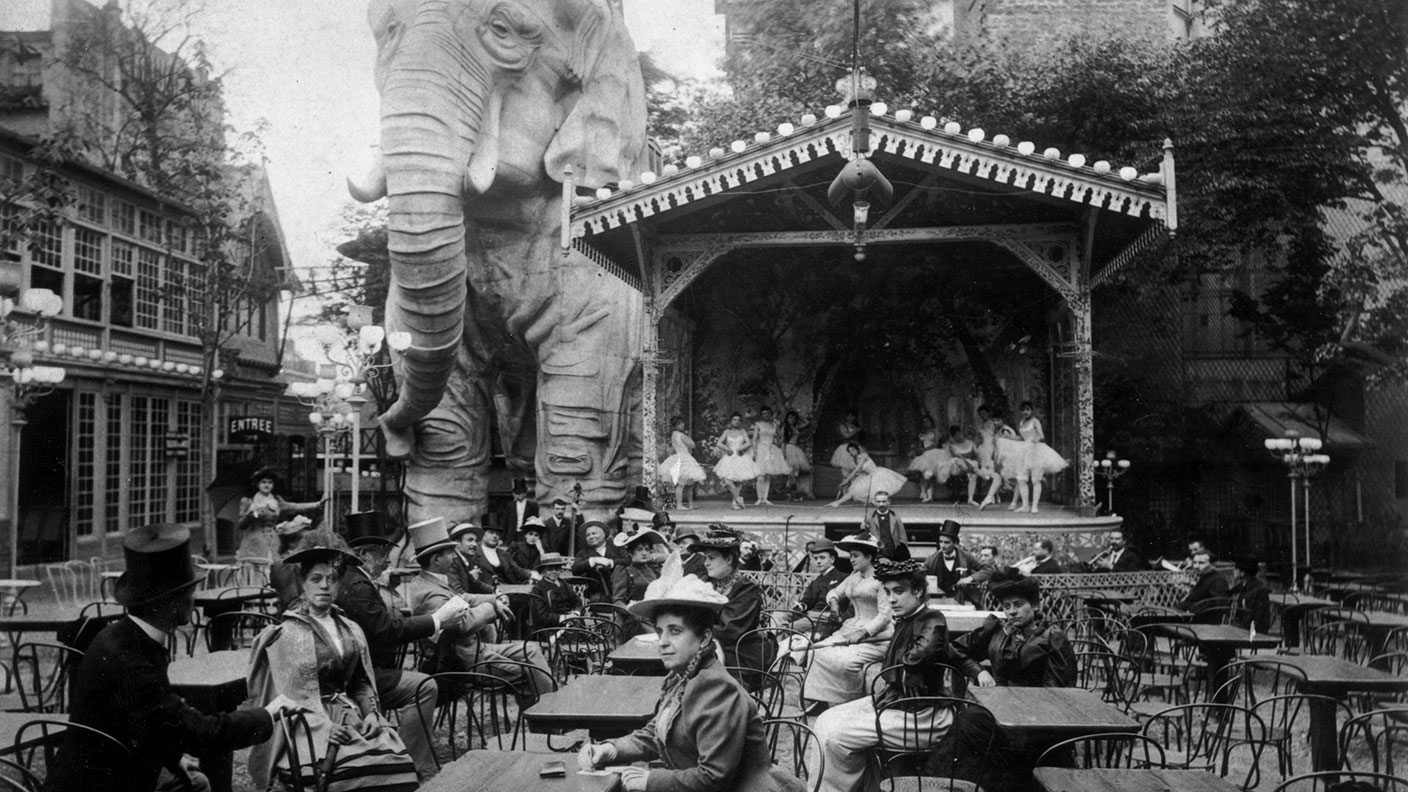6 October 1889: Le Moulin Rouge opens its doors
On this day in 1889, Le Moulin Rouge cabaret club first opened in Paris during the Belle Époque era.


The Belle Epoque was a time of great excitement in Paris. The French capital had put the humiliating defeat in the Franco-Prussian War of 1870 behind it, and looked forward to the coming 20th century with a renewed sense of optimism.
Meanwhile, the industrial revolution steamed ahead. New and exciting technological innovations began to appear, for example in photography and film. Not to be left behind, painting and music also flourished, with Toulouse-Lautrec in the vanguard of the post-impressionist art movement.
In 1889, Paris basked in the limelight. That year the Exposition Universelle was held in the city, focusing the world's attention on the scientific and cultural achievements of France. Nothing was more emblematic of this huge swell of Gallic pride than the erection of the Eiffel Tower – the tallest structure in the world until 1930.
MoneyWeek
Subscribe to MoneyWeek today and get your first six magazine issues absolutely FREE

Sign up to Money Morning
Don't miss the latest investment and personal finances news, market analysis, plus money-saving tips with our free twice-daily newsletter
Don't miss the latest investment and personal finances news, market analysis, plus money-saving tips with our free twice-daily newsletter
But the Eiffel Tower wasn't the only offspring of the Belle Epoque. Not far away, on the evening of 6 October, a brand new music hall was making ready to open its doors for the first time on the fashionable Boulevard de Clichy – Le Moulin Rouge.
“The public came to discover this extravagant place with its huge dance floor, mirrors everywhere, and galleries that were the last word in elegance, to mix with the riff-raff and girls of easy virtue, in a garden decorated with a big elephant with rides on donkeys for the ladies' pleasure”, notes Le Moulin Rouge's website. “There was such a wild atmosphere that the show was not only on the stage but all around: aristocrats and louts in caps had fun side by side, in an atmosphere of total euphoria.”
Whether it was the restoration of the republic with its egalitarian values, or simply the allure of the cabaret that appealed to universal human nature, the rigid class barriers of the 19th century began to dissolve in the heady, rarefied air of the famous red windmill, Le Moulin Rouge conditions that would one day lead to the performing of one of Paris' most popular, and, for the time, outrageous cultural icons: the cancan.
Get the latest financial news, insights and expert analysis from our award-winning MoneyWeek team, to help you understand what really matters when it comes to your finances.

-
 31 August 1957: the Federation of Malaya declares independence from the UK
31 August 1957: the Federation of Malaya declares independence from the UKFeatures On this day in 1957, after ten years of preparation, the Federation of Malaya became an independent nation.
-
 13 April 1960: the first satellite navigation system is launched
13 April 1960: the first satellite navigation system is launchedFeatures On this day in 1960, Nasa sent the Transit 1B satellite into orbit to provide positioning for the US Navy’s fleet of Polaris ballistic missile submarines.
-
 9 April 1838: National Gallery opens in Trafalgar Square
9 April 1838: National Gallery opens in Trafalgar SquareFeatures On this day in 1838, William Wilkins’ new National Gallery building in Trafalgar Square opened to the public.
-
3 March 1962: British Antarctic Territory is created
Features On this day in 1962, Britain formed the British Antarctic Territory administered from the Falkland Islands.
-
10 March 2000: the dotcom bubble peaks
Features Tech mania fanned by the dawning of the internet age inflated the dotcom bubble to maximum extent, on this day in 2000.
-
9 March 1776: Adam Smith publishes 'The Wealth of Nations'
Features On this day in 1776, Adam Smith, the “father of modern economics”, published his hugely influential book The Wealth of Nations.
-
 8 March 1817: the New York Stock Exchange is formed
8 March 1817: the New York Stock Exchange is formedFeatures On this day in 1817, a group of brokers moved out of a New York coffee house to form what would become the biggest stock exchange in the world.
-
7 March 1969: Queen Elizabeth II officially opens the Victoria Line
Features On this day in 1969, Queen Elizabeth II took only her second trip on the tube to officially open the underground’s newest line – the Victoria Line.

